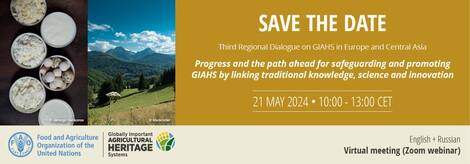马铃薯的跨越时空之旅
30 May 2024
30 May 2024

©FAO/ Liana John
马铃薯历史悠久,大约8000年前起源于南美洲安第斯山脉,当时的猎人和采集者驯化了生长在的的喀喀湖周围的野生马铃薯。很久以后,大约在16世纪,西班牙人将马铃薯从秘鲁带回欧洲,并开始在国内种植。他们把这种块茎作物作为奇花异草送给欧洲各地的植物学家,甚至是送给教皇这样的显赫人物。

©ARGE Heumilch
Through its Globally Important Agricultural Heritage Systems (GIAHS) initiative in Europe and Central Asia, the Food and Agriculture Organization of the United Nations (FAO) works to recognize and sustain traditional agricultural systems with rural cultures and economies and to promote and integrate them into broader food systems value chains. Science and innovation play important roles in underpinning the strength and viability of GIAHS.
要不要来杯茶?
21 May 2024
21 May 2024

你可知道全世界大多数语言中的“茶”都不外乎两个发音?英语(tea)、法语(thé)、西班牙语(té)和荷兰语(thee)的发音基本都是tea的变体。中文官话和粤语中的chá则衍生出了印地语中的chai、阿拉伯语中的shay和俄语中的chay。这背后的故事颇为有趣。

The third Regional Dialogue on GIAHS for Europe and Central Asia is a forum for GIAHS actors from across the region. Scientists and experts will provide scientific evidence gleaned from the work carried out in these agricultural systems, share keys to the resilience that characterizes these systems, and discuss the current threats that put their sustainability at risk.


